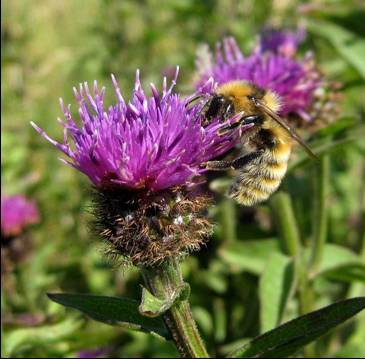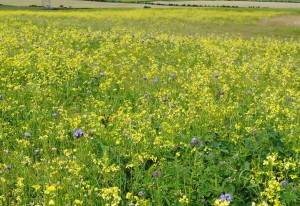
Bumblebee Project
Farmers and volunteers in Caithness have teamed up with the Bumblebee Conservation Trust to help one of the UK’s rarest bumblebees – now a Scottish speciality – the Great Yellow Bumblebee – Bombus Distinguendus. Previously widespread across the UK it now maintains a precarious foothold only in the far north – since 1999 there were only 15 sightings in Caithness.
The Landfill Communities Fund supported funding for an innovative three year project in Caithness. The project builds on substantial research to provide a spring sown mix of pollen and nectar-bearing flowers (mainly comprising agricultural legumes) and combines the skills and enthusiasm of farmers and volunteers. This mix was sown in 2010 at twelve participating farms, spread broadly between Reay and Wick, and results have already exceeded expectations.
Spreading out the plots supports as many bumblebee nests as possible, so that foraging bees can reap the rewards of protein-rich pollen – essential for new bees – and nectar – the high octane fuel that bees run on. Healthy nests in summer rear daughter queens, which will start new nests after they emerge from hibernation the following year. These plots help extend the period over which new queens are reared, vital for this rare bee where a nest rears only a handful of new queens.
A team of volunteers from the Caithness Biodiversity Group have been conducting regular surveys of the plots since 2010, continuing in 2012. To our delight, Great Yellow Bumblebees have so far been recorded on all but one farm, including areas where there were no modern records. On some farms, double figure counts of Great Yellow Bumblebees gave exceptional cause for encouragement, and the rare Moss Carder Bumblebee, Bombus Muscorum, was also noted.
The project finishes at the end of the 2012 season. It has provided compelling evidence of how small, flower-rich, areas can benefit rare species and provide a range of environmental benefits. This approach is also suitable in other areas to support essential pollination services for crops and wildflowers. Providing these short term boosts for bee numbers is very valuable, but especially where this complements management promoting long-term benefits of wildflower communities.
The Caithness Biodiversity Group is working towards extending this project beyond 2012.
You can enjoy identifying Bumblebees in your garden and countryside by downloading this guide “Bumblebees of Caithness and Sutherland”
